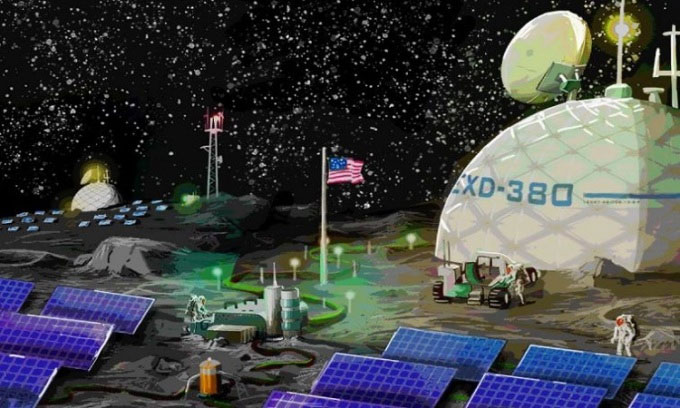Developing a micro-grid to power the Moon base
To operate NASA's Moon base, Sandia National Laboratory is developing a microgrid to distribute electricity from the nuclear reactor. This is also the solution that Russia's moon base is interested in

Future Moon Base.
NASA's ambition to establish a permanent base on the Moon, as a rehearsal effort for a manned mission to Mars, poses a huge technical challenge. The Moon base does not carry more than 1,000 times farther from Earth than the International Space Station (ISS), but it also requires a whole new way of solving problems.
One of the biggest challenges is powering the base. Due to the need to host astronauts for two months at a time, the base will need to operate throughout the 14-day lunar night. That means solar cells are not a practical solution, so a series of small nuclear reactors are being developed to be used in conjunction with solar panels. However, the base needs a micro-grid to transmit electricity, ensuring a regular and stable supply. The complexity further increases when the base consists of two bases. One is a place to live and the second is a complex for mining and fuel processing a few kilometers away.
According to the proposal, the microgrid at each facility would be interconnected, similar to the grid on the ISS, but requiring some basic adjustments. For example, Sandia researchers need to determine whether the grid works with direct current or uses alternating current and converts it to direct current in the place where people live.
Another issue includes developing systems and software to coordinate power at the treatment plant so that the voltage remains stable even as demand changes over a period from a few milliseconds to an entire season. To do this, Sandia developed the Scalable Microgrid facility and control system design methodology to study the Moon base's energy needs and specifications. Their idea was to develop the control system first with the power storage specifications, and then the components to meet the specifications.
"There are some very important differences between the microgrids at the ISS and the Moon base," said Jack Flicker, an electrical engineer at Sandia. "One of those differences is the geographical size, which is especially problematic when operating at low DC voltages. Another problem is that when the system begins to expand, there will be more electrical equipment. and power distribution in the base. Sandia is looking at microgrids with multiple distribution sources over the long term."
- Exploding the micro grid market
- 'Print' base on the moon
- Revealing the area where Russia's Moon base is deployed
- A great solution of $ 6 helps to bring electricity to millions of poor people
- Russia will build bases on the moon?
- Russia will build bases on the Moon to fly to Mars
- China wants to turn the Moon into a dead land
- NASA built a human base on the Moon with this $ 6 million vehicle
- ESA wants to build a base on the moon
- Russia - Europe charged with shaking hands to bring people to the Moon to settle
- Grid connected solar power in Ho Chi Minh City
- ITU adopts smart grid standards
 Van Allen's belt and evidence that the Apollo 11 mission to the Moon was myth
Van Allen's belt and evidence that the Apollo 11 mission to the Moon was myth The levels of civilization in the universe (Kardashev scale)
The levels of civilization in the universe (Kardashev scale) Today Mars, the sun and the Earth are aligned
Today Mars, the sun and the Earth are aligned The Amazon owner announced a secret plan to build a space base for thousands of people
The Amazon owner announced a secret plan to build a space base for thousands of people